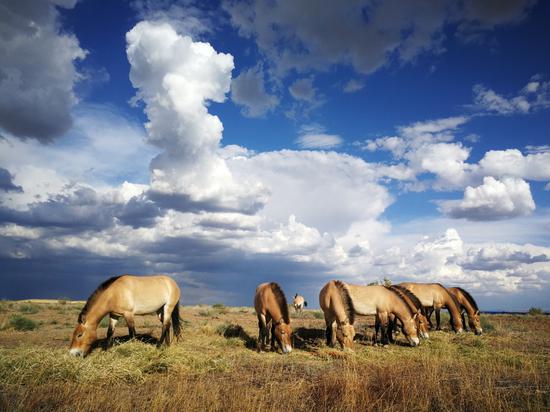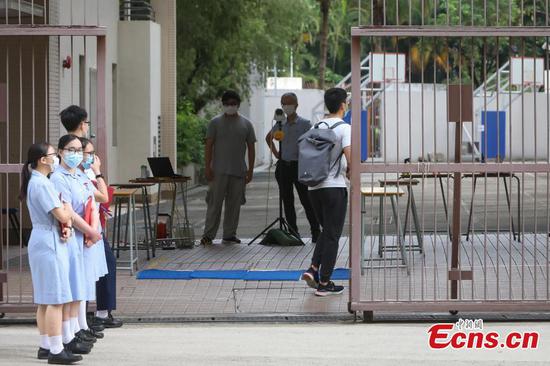
Endangered Mongolian horses graze in the meadows after they were released into a 200-hectare enclosure in the Xinjiang Uygur autonomous region on May 27, 2020. (Photo provided to chinadaily.com.cn)
Two dozen endangered Mongolian horses that had been nurtured in captivity were released into a 200-hectare enclosure on Tuesday in the Xinjiang Uygur autonomous region for an experiment.
Conservationists want to find out if the animals are capable of surviving independently in the wild.
Ma Xinping, director of the Xinjiang Wild Horse Breeding Research Center, said the experts are hoping the horses — known as Przewalski's horses — can learn the necessary skills to live on their own. Then they can be released.
"To help the horses return to nature, we have to train them to cope with the natural environment and improve their ability to find food and water in the wild," Ma said.

Endangered Mongolian horses nurtured in captivity are released into a 200-hectare enclosure in the Xinjiang Uygur autonomous region, on May 27, 2020. (Photo provided to chinadaily.com.cn)
The center's training enclosure is in Jimsar county, about 130 kilometers from Urumqi. It's part of the biggest wild horse research center in Asia, which has successfully bred 716 Prezewalski's horses in six generations since 1985, when it imported 24 of the animals from Europe and the United States.
The horses are native to the steppes of central Asia and have long been considered the only "true" wild horse in the world today. The center owns 439 Prezwalski's horses and is home to nearly 25 percent of the breed worldwide.


















































